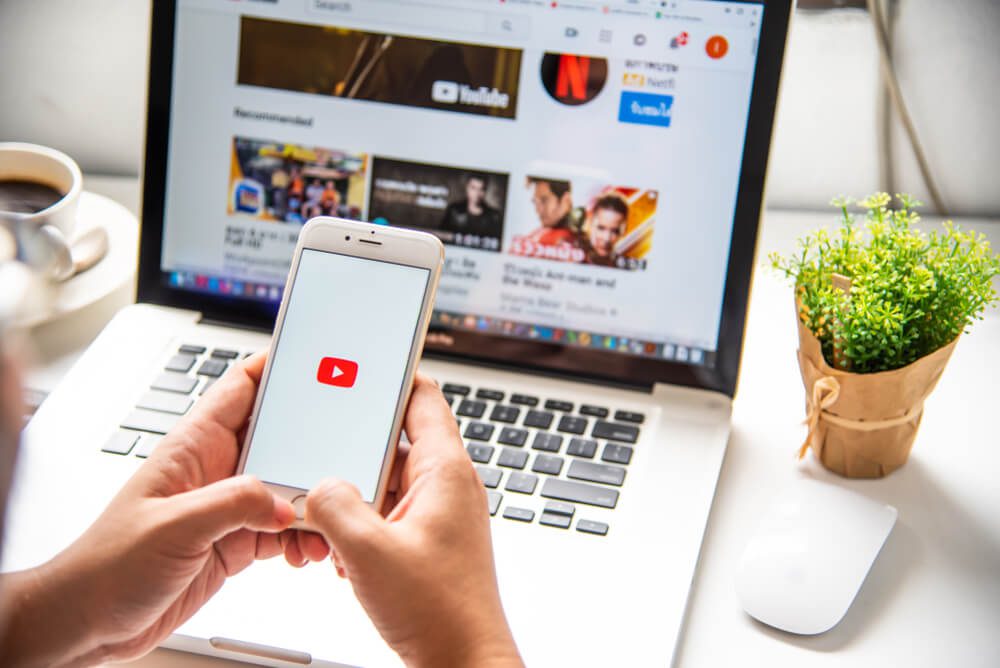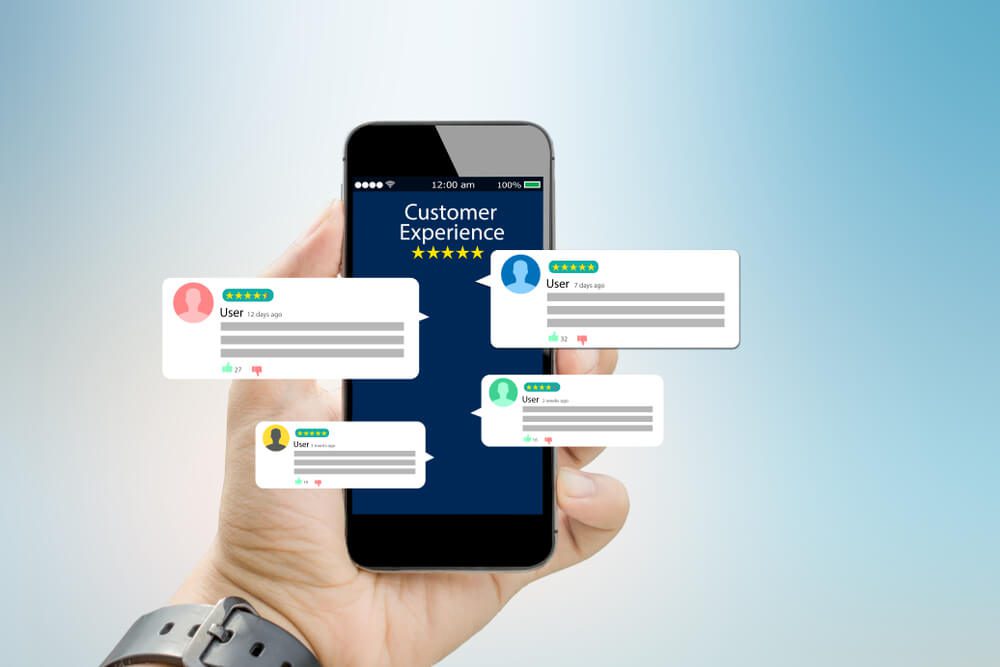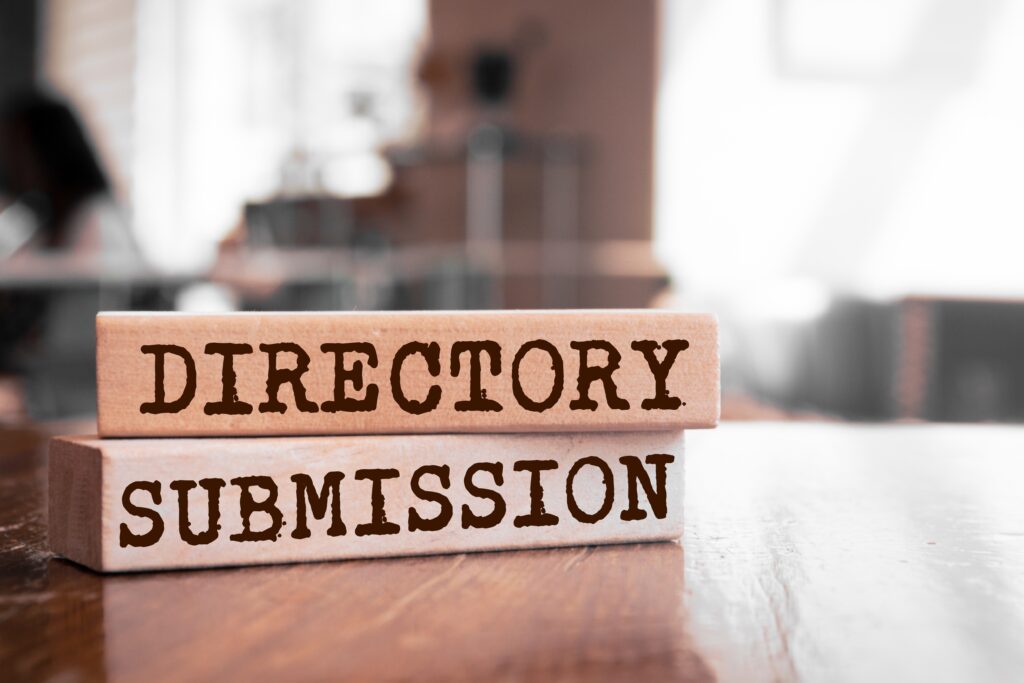
16 Lawyer Marketing Ideas: Top Strategies for 2025
Law school covered everything from personal injury to intellectual property, but we’re guessing a professor never went over how to run a successful Facebook ad campaign or the differences between Google Analytics 4 and Universal Analytics.
The digital advertising world is just about as specialized as the legal one. As such, a lawyer’s marketing plan can consist of many (rapidly) moving parts. You don’t have time to become an expert in email marketing, search engine optimization, and a dozen other fields. That’s where fractional law firm CMOs come in, delivering the lawyer marketing ideas that make your practice perfect.
How To Market as a Lawyer
Law firm marketing strategies tend to have several points in common. After all, there are only so many search engines or so many social marketing apps. However, there are critical differences once you delve into the details.
Small law firm marketing techniques can differ from their large enterprise counterparts, especially when it comes to what the budget will allow. Beyond that, firms specializing in estate planning likely won’t use billboard advertising in the same way as personal injury firms.
Marketing your law firm involves making data-driven decisions based on various factors, including firm size, location, practice areas, budget, and more. Client acquisition starts with brand awareness and moves to retention and reputation. It’s a multi-step process, so the sooner you start, the better.
It’s time to go over some lawyer marketing ideas, so grab that notepad. Digital Authority Partners (DAP) is sharing 2025’s best law firm marketing strategies below.
Watch this video to find out more about how Digital Authority Partners brings you the best law firm marketing strategies:
Write Content With SEO Best Practices: Lawyer Marketing Idea 1

One of the most effective marketing tactics for attorneys to deploy in 2025 is content marketing. There’s a reason it comes in at the number one spot: we’ve seen content marketing increase organic traffic by 300% when utilized properly.
Content is not a new inbound marketing technique, BUT the changes seem to happen as quickly as a movie makeover montage. Staying on top of the changes (like the ideal number of characters in a meta description, for example) means staying ahead of your competitors.
Various online tools and tricks can tell you what search terms users are entering into search engines like Google — including search terms related to your practice areas. Ahrefs, HubSpot, Google Analytics, and others might be on your wish list.
What Is the Best Form of Advertising for a Lawyer?
SEO Best Practices Summarized
So, what is Google Search looking for when it comes to content? Here are a few tips for writing optimized legal marketing content:
- Headers: Start with an H1 header (that’s your title). Go to H2 and H3 headers, ending with an H2 conclusion.
- Section Length: Watch the word count between headers. Try to stay around 300 words per section (although this can vary based on the industry).
- Paragraph Length: Are you reading this on your phone? That’s why we keep our paragraphs around two to four sentences long. Google makes sure to account for mobile readability when ranking pages.
- Key Words: Google makes sure your content is related to the subject matter by scanning for words and phrases that suggest you know what you’re talking about. Tools like Ahrefs can be handy here (although they can be equally expensive).
- Internal and External Links: Internal links point toward other relevant content on your site. For example, we could suggest that you read more about winning SEO strategies for Philadelphia legal firms or ask if you want to learn more about analytics. External links go to articles from other reputable sites — linking to a .gov or .org is a good way to start.
Before we cover search engine optimization (SEO) — a vital component of a successful content campaign — we’ll go over a few types of content you might see on your competitors’ sites.
Post Blogs: Lawyer Marketing Idea 2

Did you come to this page by Googling “lawyer marketing ideas?” Or did you Google something similar and then click on this page? That’s the magic of SEO and content marketing.
Content marketing and SEO is all about trying to answer what people are searching for online. You want to meet them at their pain points and provide a solution. A Texas-based personal injury firm might create a long-form blog piece entitled “Who is liable for a truck accident in Dallas?”.
A great educational article not only answers the user’s search query but also directs them to the law firm that published the piece. That’s the true power of SEO and content marketing.
If you use the blog on your branded website as the hub of your content marketing, this also helps your SEO in general. Search engine algorithms tend to boost websites that have a large volume of content, especially when content is added and updated regularly. Conversely, the algorithms interpret minimal content and infrequent updates as a lack of authority.
A well-designed SEO strategy sees high-quality content released on a regular basis. As you can imagine, that can get pretty time consuming.
Content Marketing for Lawyers: Tips
Of course, few attorneys have the time to write a lengthy blog post every day, let alone every week. That’s why many law firms outsource this role. Take a look at this case study on how Jacko Law Group benefited from agency-provided SEO and marketing services.
For Jacko Law, a combination of SEO, email, and YouTube led to a:
- 53% increase in organic visibility within 14 months
- 28% increase in leads
Once visitors start to find your content and associate your brand with the answers and legal services they need, they are more likely to request a consultation with your law firm. If nothing else, you maintain top-of-mind awareness — which is (almost) the entire point of marketing.
SEO strategies for lawyers vary based on your specific practice: Here’s how a personal injury SEO expert creates incredible campaigns:
Create Landing Pages: Lawyer Marketing Idea 3

What Is a Landing Page?
A landing page may be the first page on your site that a potential client finds (often through an email or Google search). It needs to be able to stand on its own, make an impression, and increase conversions.
How To Write a Landing Page
First, don’t skimp on the content. It should be as informative as a legal brief but easily digestible and understandable. You want to make legalese easily readable. Hint: try ditching the center-embedding and non-standard capitalization practices.
Try to include everything your user might want to know about the core service on the page in a logical and digestible fashion, without too much legalese or super lengthy paragraphs.
What does it take to make a service page convert? Salesmanship, urgency, and a call-to-action. Examples of calls-to-action include: “Call our office now.” “Fill out this form and an associate will contact you.” “Click here to book a complimentary consultation.” Whatever works best for your firm — those are all great calls to action.
Lengthy service pages also have the advantage of boosting your SEO with the long-form content that Google simply adores. Including a “frequently asked questions” section at the end of your page is a fantastic way to get critical keywords (and critical word count) on your page.
Don’t Forget To Introduce Yourself
These landing pages also need to pitch you and your firm in terms of expertise and experience with that core legal service.
This may feel redundant — this information is on your “about us” page, after all. Some clients may never spend much time on your “about us” page. The point is to collect them as a lead while they are still on that page, since it may be the only chance you get.
Write Guest Posts for Relevant Websites: Lawyer Marketing Idea 4
Some legal websites, forums, and blogs pay contributors for their guest posts, but there are good reasons to do a guest post even if you don’t get paid for your contribution.
For one, it can be a powerful complement to your law firm’s content marketing. A major industry website may have more domain authority than your business webpage. Blog posts may have a hard time ranking on Search Engine Results Pages (SERPs) — especially if your site has a lower domain authority — but a guest post on a high-authority website may turn up more easily.
Although it’s not your branded page, you typically get to include your branding in the article byline, including avenues of contact. Even if readers don’t convert to leads immediately, they will start to become familiar with your name, building trust in your brand as an authority in your field.
Additionally, online industry publications often include a link or two to your business website. If the website has significant domain authority, these can be powerful backlinks, contributing significant authority to your domain and making your pages more likely to turn up in organic search results.
Remember, search engine web crawlers interpret backlinks as “votes” for the authority of your website. A backlink from another high-authority website is like a vote from a celebrity or a top influencer.
Consider reaching out to relevant publications and offering to do a guest post. Many publications are looking for content and will be happy to oblige. Digital marketing firms can also help you obtain guest posting opportunities (and could have additional lawyer marketing ideas as well).
If you don’t have time to write a guest post, you can delegate or outsource the writing, just as with content marketing.
Improve Your Website’s Technical SEO: Lawyer Marketing Idea 5

Law firm SEO is a multi-variable equation. Different things contribute to your site’s page ranking within popular search engines like Google or Bing.
Some of the biggest contributors to your law firm’s SEO are:
- Volume of content in your site index
- How recently your site has been updated
- Age of the domain
- Keyword optimization
- Backlinks (links to your site from other sites)
However, search engines don’t just rely on these qualitative factors to determine a page’s rank. Search engine web crawlers also examine the code of your website to see if you (or your developer) have your act together.
Consider the goal of search engines: they want users to trust their algorithm to deliver relevant, authoritative content that will solve their problems. If a site is slow, confusing, and hard to navigate, the search engine will have failed its users by placing that site high on the SERP.
As such, web crawlers are configured to scan the site code for signs of a potentially frustrating digital experience. Tightening up the code to please these web crawlers is called technical SEO.
Six Factors That Affect Technical SEO
Many site vectors contribute to technical SEO. Here are six factors that affect technical SEO:
- Mobile Friendliness: Search engine crawlers look at the mobile version of sites first. If a mobile site is slow or badly optimized, rankings suffer.
- Page Load Speed: Users tend to leave slow sites quickly. Search engine web crawlers perform speed tests on your site and downrank sites with long load times.
- Easy Navigation: Interlinking your pages, creating a sitemap page, and/or including a robots.txt file in the site index can help the web crawlers find their way around.
- Security: Sites built on secure HTTPS markup language tend to get a better ranking from search engines.
- Proper Header Nesting: An orderly code-level nesting of Title, H1, H2, H3, etc. tags indicates to search engine web crawlers that you have created an organized and navigable user experience.
- Accessibility: Since a landmark 2019 court ruling, websites must be accessible under the Americans with Disabilities Act. Accessible websites accommodate for the hearing, visually, and motor-impaired. Search engine web crawlers are now programmed to take note of this.
Remember, the goal of SEO is for potential clients to discover your website in organic search results when they enter keywords relevant to your law practice. For example, a criminal defense lawyer digital marketing agency can help you target “Criminal Defense Lawyer in Boston” or a family law marketing agency can help you lock down “How much does a divorce lawyer cost?”
If your code is standing in the way of this happening, fixing it is a no-brainer. The work above is often delegated to a Dev Team since it typically involves coding and other highly specialized techniques. Reaching out to an SEO agency is a smart way to get this done while you focus on arguing cases and writing legal briefs.
Write a Gated White Paper: Lawyer Marketing Idea 6

You might have heard the term “lead magnet” in the context of digital marketing. One of the best kinds of lead magnets for a law firm is a “gated white paper.”
A “white paper” is similar to an eBook, but it is more academic and authoritative. Making the white paper “gated” means making it accessible behind a “gate”—in this case, a lead-generation gate.
Prospects might follow a search engine or social media ad to a landing page that promises free access to a white paper if they enter their email address or other contact info. Once the contact info is entered, they get routed to a download page, or the white paper is emailed to the lead as an attachment. That’s the gate.
The importance of the lead magnet is the permission implied by the lead turning over their contact information. Laws like the CAN-SPAM Act prohibit cold email campaigns—the lead has to give you their contact information willingly in a process called an “opt-in.”
Gated white papers work because users get a fair exchange in return for their “opt-in” permission to email them—they get access to the white paper, so make sure it is readable and full of valuable information! Just like content marketing, the actual writing of the white paper can be delegated or outsourced.
Once you have built an email list with your gated white paper, you can use the contact information you gathered to create a segmented email campaign. You can also send out individual emails or do follow-up calls and SMS texts if they provide their phone number.
Add a Chatbot Feature: Lawyer Marketing Idea 7

Chatbots may seem simple enough, but they are actually a form of Artificial Intelligence (AI). A chatbot resembles chat support, but instead of a human being sitting on your side of the chat, a computer algorithm interprets the user’s input and provides guidance based on its assessment of their needs.
At their best, chatbots can direct users to resources that answer their questions without consuming expensive hours of customer service labor. If even a modest percentage of chat inputs can be answered by AI, it saves a law firm significant costs on human resources.
Of course, a frustrating chatbot can turn a user off from a law firm altogether. This kind of brand damage is the opposite of what we want to achieve with marketing. Chatbots should not act as impenetrable gatekeepers of employee time. If your potential clients need to reach you, it pays to be reachable.
Chatbots can also perform the important function of lead generation and segmentation. A chatbot can be configured to collect the email address and/or phone number of the user so your team can follow up.
Questionnaires within the chatbot can also segment users by demographics (age, gender, etc.) or areas of inquiry (corporate law, real estate law, estate planning, etc.) Keep reading to learn about the advantages of a segmented email list.
Implement Segmented Email Marketing Campaigns: Lawyer Marketing Idea 8

Email lists often get overlooked by inexperienced marketers, but they are one of the most valuable assets of any company. Once you build an email list, it’s a fairly cost-effective avenue to share and repurpose your other attorney marketing strategies (like LinkedIn thought leader posts, SEO-centered blogs, etc.).
The purpose of emails is to stay top-of-mind for your list as an authority in your area of practice. This could take the form of emails that tell stories, emails that give tips, or emails that describe daily life in your practice. Sometimes, you can pitch your services directly, but the best email campaigns pitch sparingly and seek to give value in the form of information or entertainment.
Emails can be sent weekly, in weeklong sequences, or daily. You can even create automated email sequences, so new leads get treated to the same familiarity-building experience regardless of when they enter your pipeline, like clockwork, without having to do much extra work.
How To Get More Clients As An Attorney: Get Specific With Segmentation
The most powerful email campaigns, though, are segmented campaigns. Segments of your email list identify subjects that the segment is likely to be interested in, as well as subjects the segment is likely to not be interested in.
You can segment your list based on the campaigns they responded to, questionnaires they filled out, or which service page they converted on (remember those landing pages?). This usually requires an email management or CRM software solution to easily send an email to everyone in a certain segment. This software can also track which subject lines cause people to open emails and which links within the email get clicked.
Some types of email segmentation include demographic, geographic, and psychographic, among others.
Behavioral segmentation could include activities like:
- Website interactions
- Email engagement (opening or clicking on emails)
Demographic segmentation could include:
- Age
- Gender identity
- Family size
- Job
- Income
- Marital status
Geographic segmentation could include:
- Country
- State
- City
- County
- Zip code
Leads that aren’t ready to hire you now could easily hire you in the future if you retain top-of-mind awareness. If a competitor is top-of-mind, they get the business. Email campaigns make it easier for your law firm to remain top-of-mind.
Hire a Fractional CMO: Lawyer Marketing Idea 9

For those who haven’t heard the term, “CMO” is short for Chief Marketing Officer. In large enterprises, the CMO is a senior manager on the level of the CEO, CFO, COO, and CTO.
Needless to say, marketing professionals who rise to the level of CMO know their stuff and command high salaries. The median base salary of a CMO sits above six figures, not including benefits and equity in the company.
Of course, a majority of legal practice is done by small law firms, many of which don’t have an extra hundred thousand plus lying around in the budget to devote to payroll. Hiring a full-time CMO is out of the reach of most attorney practices.
What many smaller law firms can afford, on the other hand, is a fractional CMO (FCMO). A fractional CMO may work for multiple companies at a time, helping wind up each company’s marketing apparatus like a Swiss watch.
Each company only pays the fractional CMO for the portion of the executive’s time they actually use. This could be 10 to 20 hours per week, with contracts running anywhere from a few months to twelve months or beyond.
What Is a Fractional CMO?
In addition to saving money on a full-time salary, a law firm can hire the services of a world-class fractional CMO for a finite period, without the expectation of an ongoing commitment. The FCMO also doesn’t get benefits or company equity, another way in which a fractional CMO saves money compared to a full-time CMO.
Eventually, the fractional CMO also leaves. Does this mean the marketing efforts spearheaded by the fractional CMO fall apart? Not if the fractional CMO does their job well. Part of the mandate of a fractional CMO is to train the firm’s marketing department (or whoever wears that hat in your firm) to continue the marketing initiatives after the fractional CMO’s contract is up.
Fractional Law Firm CMOs: What Does a CMO Do in a Law Firm?
That’s the biggest value that a fractional CMO brings to the table is leadership, borne of experience. If your marketing efforts lack cohesiveness, a fractional CMO may be the answer.
Of course, you want a C-suite executive who understands the nuances of legal advertising, which is why we recommend talking to a fractional law firm CMO who can speak your language and the language of marketing.
Excel at Social Media Marketing: Lawyer Marketing Idea 10

Most attorneys know that social media can be a powerful tool to create brand recognition but don’t have the time to make social media work for them.
2025 is the perfect time to finally harness your social media presence to find potential clients. If you don’t have time to do it yourself, this is a task that can be delegated, outsourced, automated, and/or systematized.
Consider setting a posting schedule for your social media platforms — Facebook, X (Twitter), Instagram, etc. — so that your following is constantly reminded of your existence and your expertise.
Remember that each social platform is different. Even if you use the same content across multiple platforms, you will need to make adjustments for the specific platform. Not sure where to start? Work with a personal injury marketing agency that can take your law firm’s social media campaigns to the next level.
Revamp Your LinkedIn Presence: Lawyer Marketing Idea 11

LinkedIn has become an increasingly popular marketing platform for professional service providers. If you have not put effort into your personal or business LinkedIn profile, it’s time to do so.
Many professionals have haphazardly assembled LinkedIn profiles that read like a jumbled resume, with a mishmash of styles and presentation tactics.
Take the time to update your LinkedIn. Add your best headshot and include a banner image. Optimize your headline, introduction, associations, and highlights.
Make sure your pictures, text, and imagery align with what visitors will find on your law firm website, Facebook page, Avvo page, and any other places people might encounter your brand. Preview your LinkedIn to ensure no part of it is unsightly or confusing.
If parts of the profile contain lengthy text that gets cut off by a “see more” accordion expander, consider shortening the text so it all fits in the “at-a-glance” view. Make sure no vital information is hidden or hard to access.
The profile is not the only way to use LinkedIn, either. You can use updates like social media posts or publish articles like a blog. Used correctly, LinkedIn works well when marketing for attorneys and law firms.
Develop a YouTube Marketing Strategy: Lawyer Marketing Idea 12

YouTube is one of the most powerful tools in your legal marketing tool belt for a few reasons:
- YouTube has its own algorithm that will recommend your videos to viewers searching for content similar to yours if you execute it properly.
- YouTube videos don’t get “old” in the same way blog articles do. A popular YouTube video could generate traffic for months or even years.
- Your YouTube following represents an audience that can be segmented, retargeted, and marketed to.
In many ways, a YouTube marketing strategy is similar to content marketing. You find out what users are searching for, then create video content to answer their questions.
You can even analyze the YouTube channels of your competitors. If one of their videos caught a few thousand views, while the rest of their videos only got a few dozen or a few hundred, that video topic may be something for you to emulate.
Fast Tips: YouTube Marketing for Lawyers
- Budget Smart: YouTube videos don’t have to be complicated. A newer smartphone can easily act as the camera and microphone, while upgraded video equipment is relatively inexpensive. You don’t need a $5,000 cinematic camera.
- Quality Counts: Make sure your videos are well-lit and the audio as good as it can be.
- Ask for Help: If you don’t know how to edit videos (or don’t have the time to commit) video editing is something you can easily delegate or outsource, as is posting the actual videos online.
- Schedule It: Get on a regular schedule where you post a video on the same day every week or the same days twice a week. Consistency is your best friend when building a YouTube following.
- Think About Length: The videos don’t have to be long. In fact, if you’re making YouTube shorts, they shouldn’t be long. Experts recommend YouTube Shorts stay under 60 seconds.
- Keep It User-Friendly: Whatever video is on the docket for that day, try to use a limited amount of jargon. Use language your potential clients can easily understand. Include a call to action in every video, whether it is to call your firm, book an appointment, or “like, subscribe, and leave a comment.”
Collect Customer Reviews and Testimonials: Lawyer Marketing Idea 13

Testimonials are one of the most important assets a business can accumulate. Consumers trust online reviews as much as they trust recommendations from friends or family members.
This is especially true of law firms. Clients depend on lawyers to protect them financially, contractually, and in some cases, to even defend their freedoms, their reputations, and their very lives.
Considering the huge responsibility clients entrust lawyers with, they want to know they are making a good decision. They want to know that the lawyer they choose has won favorable outcomes for past clients. This is why reviews are a key component of local SEO services for attorney marketing.
How To Get Reviews for Your Legal Practice
Start 2025 by getting into the habit of asking for testimonials from every happy client. Ideas to solicit law firm reviews include:
- Conducting an Exit Interview: A short in-person, phone, or video interview can be used to collect testimonials if you ask the right questions. Consider recording the conversation so you can easily transcribe any nice things your client says.
- Send a Follow-Up Survey by Email: Remember, the best time to request a testimonial is immediately after a favorable outcome. That’s when the client is most grateful and most likely to be vocal about it. Include direct links your clients can follow to popular testimonial sites like Google, Yelp, LinkedIn, or Facebook.
- Ask to Share Thank-You Messages that the client might send in writing, by email, or share on social media.
Honesty and Transparency in Customer Reviews for Law Firms
Over time, you will build up testimonial volume across all channels if you allow users to choose the platform they prefer. You can always put the text from testimonials on multiple platforms and highlight them on your website.
- PRO TIP: Include links to all relevant testimonial platforms, allowing your audience to pick their favorite. Don’t pick for them in an attempt to consolidate your reviews on one platform for your convenience.
A/B Test Your Website’s Calls-to-Action: Lawyer Marketing Idea 14

Also known as “split testing,” A/B testing is the process of testing two different versions of a digital experience and seeing which one works the best. This is an especially powerful tool for lawyers.
Like many entrepreneurs, attorneys often get excited and even stubborn about how they want things to work. However, your clients may have a different idea. An A/B test allows them to tell you that.
Using software automation tools, A/B tests can be run smoothly. Users randomly see one version or another of the digital experience. Once sufficient data is collected, a clear winner may emerge. The version that converts or engages more users is the one to go with.
Writing a CTA: What To Know
One of the best digital experiences to A/B test is the call-to-action, the part of the digital experience that tells the user what the next step should be and then instructs them to take it.
Consider the different calls to action you could offer to collect a site visitor as a lead. You could:
- Ask them to call you, with a tap-to-dial phone number for mobile browsers on their smartphones.
- Ask them to email you, with a tap-to-send email address.
- Ask them to fill out a contact form, with the instruction that an associate will follow up.
- Ask them to book a consultation, using an automated scheduling app like Calendly which syncs to your digital calendar and creates teleconference links.
Split-test different calls-to-action and see which one converts the best. The data won’t lie.
You could split test different wording for the CTA, different placement on the page, and even different colors for the text or the “send” button. There is (almost) no end to the experimenting you can do to get the maximum possible user engagement from your page.
Optimize Your Directory Listings: Lawyer Marketing Idea 15

You may be in many directories but don’t even know it. Directories are websites that catalog businesses, kind of like the Yellow Pages used to.
You may have entries in generic directories like Yellowpages.com or Yelp.com, attorney-specific directories like Avvo.com or findlaw.com, or directories like the local Chamber of Commerce or the American Bar Association websites.
Don’t neglect these directory listings!
Crucial Functions of Directories:
- Potential clients may be using directories to find law firms like yours. As such, keep your directory listings up-to-date and unified. If a directory allows you to include a logo, headshot, bio, or other text entries, don’t miss out on that opportunity. Also, double-check that your logos, slogans, bios, and other creative assets are unified across your directories. You don’t want a client to find mixed messages or disunified designs when scouting you on multiple directories.
- Directory listings are an important part of local SEO. Search engines like Google have separate web crawlers that look for local SEO listings. In the case of Google, the goal is to match online directory listings back to your Google Business Profile (GBP). You might know it as a Google My Business listing (GMB). This is called a “citation,” or a mention of your business somewhere on the web that can be correlated with your GBP.
If the web crawlers find many citations for your company, it could contribute to a higher local ranking. This is how you appear high in local searches, including the “Map Pack,” which appears near the top of every local SERP with your star rating and a tap-to-call phone number. This is some of the most valuable real estate on a Google search.
It’s highly likely a site won’t get credit for its citations if the directory listings don’t match the GBP. Type carefully and triple check.
Try a Retargeting Campaign: Lawyer Marketing Idea 16
Retargeting campaigns changed the game when they were first introduced, and they are still going strong. If you haven’t tried one, now is the time to do so.
Retargeting campaigns are all around us whenever we log on. Did you ever look at a product on an online store but didn’t buy it? Then, the next thing you know, ads for that product seem to follow you everywhere… Instagram, Facebook, and Google ads. That’s an example of retargeting.
The innovation of retargeting gives you more than one chance to win the business of someone who has visited your website. Before retargeting, if a user left your website without converting, they simply disappeared. It was completely out of your hands as to whether that user would ever return to your site or hear your message again.
How Retargeting Campaigns Work
Retargeting campaigns use tracking pixels, browser cookies, and other cached data to keep tabs on your visitors. You can then run a campaign that puts your message in front of them across a variety of channels (Facebook, YouTube, Google, Pinterest, etc.).
The goal of retargeting campaigns is to maintain “top-of-mind awareness” with your warm market — people who know you exist but who might not have decided that you are the law firm for them and might still be shopping.
Repeat exposure builds familiarity and trust. If you can target the right message to the right prospect, you might be able to claim the business of clients weeks or even months after they first visit.
One major point here: Like with all social media marketing, you’ll want to calibrate your legal marketing campaigns to be persistent but never annoying or overkill.
Need More Lawyer Marketing Ideas? Talk to DAP Today
The best attorneys know that the law is a calling, a sacred trust, and a high obligation. Lawyers who believe in their calling owe it to themselves to let their message reach the eyes and ears that need it the most. With the best marketing practices of 2025, there is no limit to an attorney’s ability to reach that audience with that message.
If you are a lawyer or law firm looking for help with your marketing efforts, contact DAP today.
Want To Meet Our Expert Team?
Book a meeting directly here



